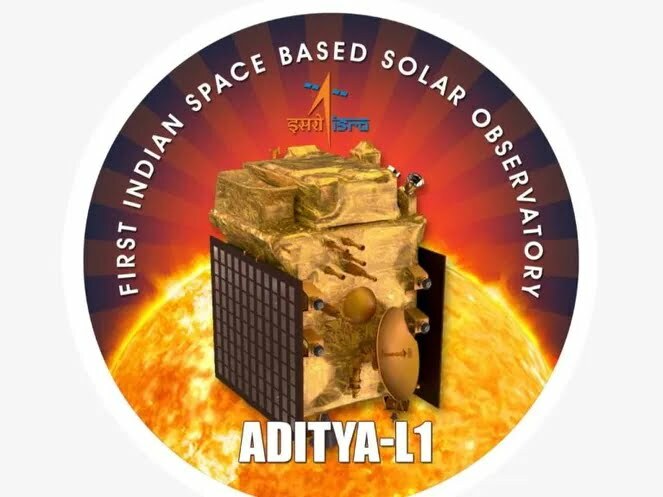India’s first solar mission, Aditya L-1, is a groundbreaking project aimed at studying the Sun’s corona and its impact on the Earth’s climate. Launched by the Indian Space Research Organization (ISRO), Aditya L-1 is set to be a game-changer in the field of solar research.

Background:
The Sun’s corona is the outermost layer of the Sun’s atmosphere, which is visible during a total solar eclipse. It plays a vital role in shaping the Sun’s magnetic field and the solar wind that constantly blows through the solar system. The corona is also responsible for the occasional solar flares and coronal mass ejections that can have a significant impact on the Earth’s atmosphere, communication systems, and power grids.
Objectives of Aditya L-1:
Aditya L-1 aims to study the Sun’s corona and its magnetic field in detail, which will help scientists better understand the Sun’s behavior and its impact on the Earth’s climate. The mission will also study the solar wind and the coronal mass ejections to predict and mitigate their effects on the Earth’s communication and power systems.
Payload of Aditya L-1:
Aditya L-1 will carry seven payloads, including:
- Visible Emission Line Coronagraph (VELC): This instrument will observe the visible emissions from the corona and measure its temperature and density.
- Solar Ultraviolet Imaging Telescope (SUIT): This instrument will study the Sun’s chromosphere and transition region in the ultraviolet range.
- Aditya Solar Wind Particle Experiment (ASPEX): This instrument will study the solar wind’s properties and its impact on the Earth’s magnetosphere.
- Plasma Analyser Package for Aditya (PAPA): This instrument will measure the plasma’s properties in the solar wind.
- Magnetometer: This instrument will measure the Sun’s magnetic field.
- High Energy L1 Orbiting X-ray Spectrometer (HEL1OS): This instrument will study the X-rays emitted by the Sun and its corona.
- Solar Low Energy X-ray Spectrometer (SoLEXS): This instrument will study the low-energy X-rays emitted by the Sun.
Expected Outcomes:
Aditya L-1 is expected to provide valuable insights into the Sun’s behavior and its impact on the Earth’s climate. It will help scientists better understand the Sun’s magnetic field and the solar wind’s properties. Aditya L-1 will also provide real-time data on solar flares and coronal mass ejections, which will help mitigate their effects on the Earth’s communication and power systems.
Conclusion:
India’s first solar mission, Aditya L-1, is a significant step towards understanding the Sun’s behavior and its impact on the Earth’s climate. The mission’s seven payloads will provide invaluable data on the Sun’s corona, magnetic field, and the solar wind’s properties. The insights gained from Aditya L-1 will help scientists better predict and mitigate the effects of solar flares and coronal mass ejections on the Earth’s communication and power systems.
What is Aditya L-1?
Aditya L-1 is India’s first solar mission launched by the Indian Space Research Organization (ISRO) aimed at studying the Sun’s corona and its impact on the Earth’s climate.
What is the significance of Aditya L-1?
Aditya L-1 is a groundbreaking project that aims to provide valuable insights into the Sun’s behavior and its impact on the Earth’s climate. The mission’s findings will help scientists better understand the Sun’s magnetic field and the solar wind’s properties, which will enable them to predict and mitigate the effects of solar flares and coronal mass ejections on the Earth’s communication and power systems.
What are the payloads of Aditya L-1?
Aditya L-1 carries seven payloads, including the Visible Emission Line Coronagraph (VELC), Solar Ultraviolet Imaging Telescope (SUIT), Aditya Solar Wind Particle Experiment (ASPEX), Plasma Analyser Package for Aditya (PAPA), Magnetometer, High Energy L1 Orbiting X-ray Spectrometer (HEL1OS), and Solar Low Energy X-ray Spectrometer (SoLEXS).
What is the purpose of each payload of Aditya L-1?
Each payload of Aditya L-1 has a specific purpose. For instance, the VELC will observe the visible emissions from the corona and measure its temperature and density, while the SUIT will study the Sun’s chromosphere and transition region in the ultraviolet range. The ASPEX will study the solar wind’s properties and its impact on the Earth’s magnetosphere, while the PAPA will measure the plasma’s properties in the solar wind. The Magnetometer will measure the Sun’s magnetic field, while the HEL1OS will study the X-rays emitted by the Sun and its corona. The SoLEXS will study the low-energy X-rays emitted by the Sun.
When was Aditya L-1 launched?
Aditya L-1 was launched on December 28, 2022, from the Satish Dhawan Space Centre in Sriharikota, Andhra Pradesh, India.
What are the expected outcomes of Aditya L-1?
Aditya L-1 is expected to provide valuable insights into the Sun’s behavior and its impact on the Earth’s climate. It will help scientists better understand the Sun’s magnetic field and the solar wind’s properties. Aditya L-1 will also provide real-time data on solar flares and coronal mass ejections, which will help mitigate their effects on the Earth’s communication and power systems.





